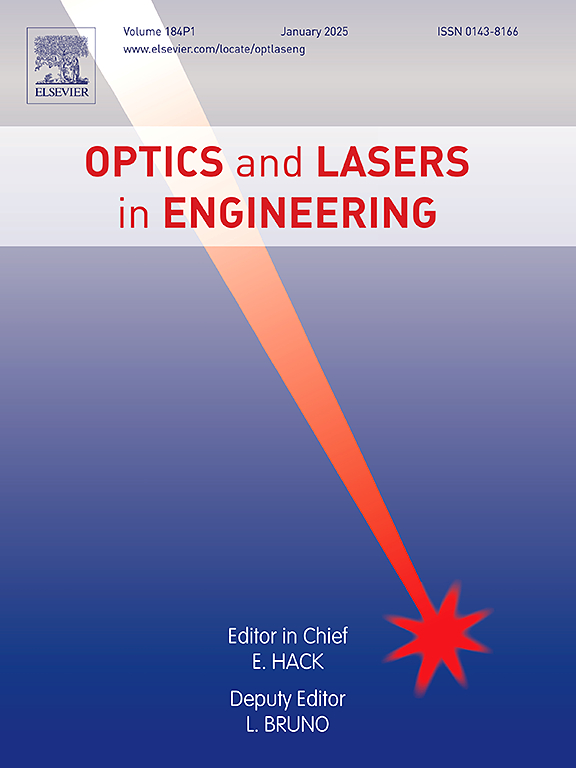A hybrid framework for low-frequency multiple interference fringe suppression in TDLAS based on feature extraction and machine learning
IF 3.5
2区 工程技术
Q2 OPTICS
引用次数: 0
Abstract
To address low-frequency multiple interference fringe noise caused by etalon effects in tunable diode laser absorption spectroscopy (TDLAS), this study introduces a hybrid denoising method that uses a feature informed neural network (FINN). This method innovatively integrates the Gramian angular field (GAF), principal component analysis (PCA), and uniform manifold approximation and projection (UMAP) techniques to efficiently extract both linear and nonlinear features of absorption spectra signals. Additionally, a feature construction module is introduced into a traditional backpropagation neural network (BPNN), significantly enhancing its ability to suppress low-frequency noise. Numerical simulations and experimental results show that the FINN performs excellently in complex noise environments, reducing the maximum absolute error by a factor of 3 compared with that of the BPNN and by >31 times compared with that of the least squares (LS) method. With an integration time of 242 s, the methane (CH4) detection precision reached 0.331 ppm, fully validating the high accuracy and stability of the proposed approach. This method provides a novel technical approach for low-frequency noise suppression in noncontact optical measurements, with broad application prospects in gas detection, environmental monitoring, and related fields.
基于特征提取和机器学习的TDLAS低频多干涉条纹抑制混合框架
为了解决可调谐二极管激光吸收光谱(TDLAS)中由标准子效应引起的低频多重干涉条纹噪声,本文引入了一种基于特征信息神经网络(FINN)的混合去噪方法。该方法创新地将格拉姆角场(GAF)、主成分分析(PCA)和均匀流形逼近与投影(UMAP)技术相结合,有效地提取了吸收光谱信号的线性和非线性特征。此外,在传统的反向传播神经网络(BPNN)中引入特征构建模块,显著提高了其抑制低频噪声的能力。数值模拟和实验结果表明,FINN在复杂噪声环境下表现优异,与BPNN相比,最大绝对误差降低了3倍,与最小二乘(LS)方法相比,最大绝对误差降低了31倍。积分时间为242 s,甲烷(CH4)的检测精度达到0.331 ppm,充分验证了该方法的高精度和稳定性。该方法为非接触式光学测量中的低频噪声抑制提供了一种新的技术途径,在气体检测、环境监测等相关领域具有广阔的应用前景。
本文章由计算机程序翻译,如有差异,请以英文原文为准。
求助全文
约1分钟内获得全文
求助全文
来源期刊

Optics and Lasers in Engineering
工程技术-光学
CiteScore
8.90
自引率
8.70%
发文量
384
审稿时长
42 days
期刊介绍:
Optics and Lasers in Engineering aims at providing an international forum for the interchange of information on the development of optical techniques and laser technology in engineering. Emphasis is placed on contributions targeted at the practical use of methods and devices, the development and enhancement of solutions and new theoretical concepts for experimental methods.
Optics and Lasers in Engineering reflects the main areas in which optical methods are being used and developed for an engineering environment. Manuscripts should offer clear evidence of novelty and significance. Papers focusing on parameter optimization or computational issues are not suitable. Similarly, papers focussed on an application rather than the optical method fall outside the journal''s scope. The scope of the journal is defined to include the following:
-Optical Metrology-
Optical Methods for 3D visualization and virtual engineering-
Optical Techniques for Microsystems-
Imaging, Microscopy and Adaptive Optics-
Computational Imaging-
Laser methods in manufacturing-
Integrated optical and photonic sensors-
Optics and Photonics in Life Science-
Hyperspectral and spectroscopic methods-
Infrared and Terahertz techniques
 求助内容:
求助内容: 应助结果提醒方式:
应助结果提醒方式:


